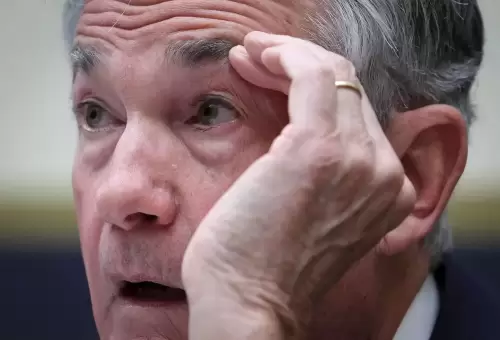 |
|
 |
|
 |
|
 |
|
 |
|
 |
|
 |
|
 |
|
 |
|
 |
|
 |
|
 |
|
 |
|
 |
|
 |
|
Cryptocurrency News Articles
Meta Is Reportedly Planning Its Re-Entry Into the Cryptocurrency Sector, Focusing on Stablecoin-Based Payment Solutions
May 09, 2025 at 10:21 am
According to reports, Meta is exploring the use of stablecoins to manage payouts across its platforms. This move comes three years after Meta ended its earlier blockchain project, Diem, which was initially called Libra.
Mark Zuckerberg's Meta is planning a re-entry into the cryptocurrency sector, focusing on stablecoin-based payment solutions, according to reports.
Meta is exploring how to use stablecoins to manage payouts across its platforms, tying into its support for digital creators and businesses. This move comes three years after Meta shut down its earlier blockchain project, Diem, which was initially called Libra.
The company has held discussions with several crypto infrastructure firms but has not yet made a final decision, sources said. It may adopt a multi-token approach using popular stablecoins such as Tether's USDt and Circle's USDC.
Meta's original attempt to launch a cryptocurrency, codenamed Libra and later renamed Diem, was shut down in 2022. The project faced difficulties due to strong opposition from lawmakers and regulators in the U.S. and other countries over concerns about anti-trust implications and potential money laundering risks.
However, Meta is now returning to the crypto sphere with a new strategy and leadership. Ginger Baker, Meta's new Vice President of Product, brings experience in financial technology and crypto to her role at the social media giant.
Having joined Meta in January, Baker is leading discussions for using stablecoins to support payouts to creators and small businesses on platforms like Instagram, allowing efficient cross-border transfers for small payment amounts.
This move is crucial as creators face high transaction fees with traditional banking methods, especially for global payments.
One executive from a crypto firm said that Meta is in a "learn mode" and open to working with more than one type of stablecoin.
Three crypto executives confirmed early conversations with Meta, focusing on cost-effective cross-border transfers. These payments could be as low as $100 per transaction, a common scenario for digital creators needing payouts across different countries.
While Meta did not confirm which stablecoin or provider it will work with, it appears the company will remain flexible depending on the region or use case.
Meta's move follows Stripe's launch of stablecoin-based accounts in over 100 countries, and Visa's investment in stablecoin startup BVNK and partnership with infrastructure provider Bridge.
Fidelity, Ripple and other financial firms are also creating their own stablecoins or entering the market in different ways, highlighting the growing institutional interest in these digital assets pegged to fiat currencies.
Market data shows that stablecoin market capitalization has passed $230 billion.
Now, Meta's return to crypto comes as stablecoins gain more support from payment platforms and investors, with Standard Chartered projecting the market could grow by $2 trillion by 2028.
Although stablecoins are gaining traction, regulatory progress in the U.S. has been slow. On May 8, a vote on the GENIUS Stablecoin bill failed in the Senate after Democrats pulled their support.
Treasury Secretary Scott Bessent described the stalled legislation as a missed chance to advance the dollar's role in digital finance.
Meanwhile, World Liberty Financial, a firm linked to former U.S. President Donald Trump, launched its own stablecoin USD1 in March. By May, USD1 ranked fifth in global stablecoin market capitalization, highlighting the rapid rise of new entrants in the sector.
Mark Zuckerberg has not commented publicly on Meta's latest crypto plans, and Meta did not respond to requests for statements.
However, new hires and early talks with crypto firms suggest a renewed effort by Meta to use blockchain-based assets for digital payments, a domain where Web3 startups have been experimenting in recent years.
Disclaimer:info@kdj.com
The information provided is not trading advice. kdj.com does not assume any responsibility for any investments made based on the information provided in this article. Cryptocurrencies are highly volatile and it is highly recommended that you invest with caution after thorough research!
If you believe that the content used on this website infringes your copyright, please contact us immediately (info@kdj.com) and we will delete it promptly.
-

- Mutuum Finance (MUTM) Price Prediction: Experts Expect a 6630% ROI to $1.90
- May 09, 2025 at 09:55 pm
- After its launch experts predict the price of Mutuum Finance (MUTM) to rise at least 6630% toward $1.90. XRP currently trades at $2.20, yet experts predict it could exceed $3.87 and further climb to $5 during 2025. The cryptocurrency market sees a rising competitor named Mutuum Finance (MUTM) take the stage. During its pre-launch sale, Mutuum Finance (MUTM) has drawn $7.9 million from 9600 token buyers who have purchased 450 million tokens.
-

-

-

-

-

-

- Ether (ETH) Implied Volatility Widens Its Lead Over Bitcoin (BTC), Signaling Relatively Greater Action in the Altcoin Market
- May 09, 2025 at 09:40 pm
- As the crypto rally gathers pace, ether has widened its lead over bitcoin in terms of volatility expectations, signaling relatively greater action not just in the second-largest cryptocurrency, but in the broader digital asset market as a whole.
-

- Bitcoin returns to February levels, passes $100,000 per coin
- May 09, 2025 at 09:40 pm
-



























































